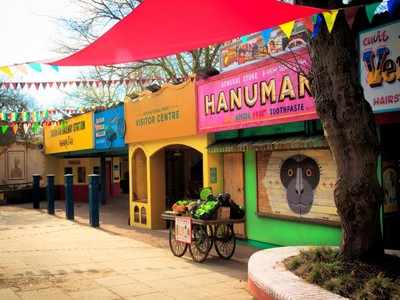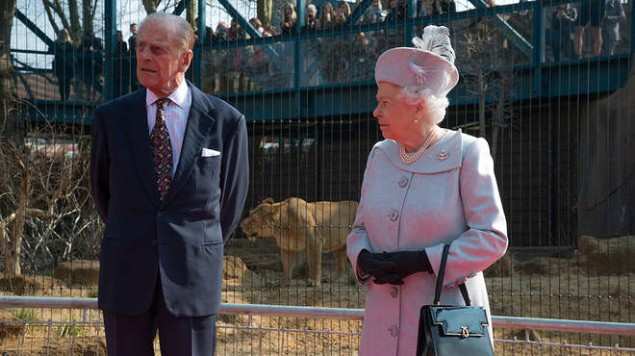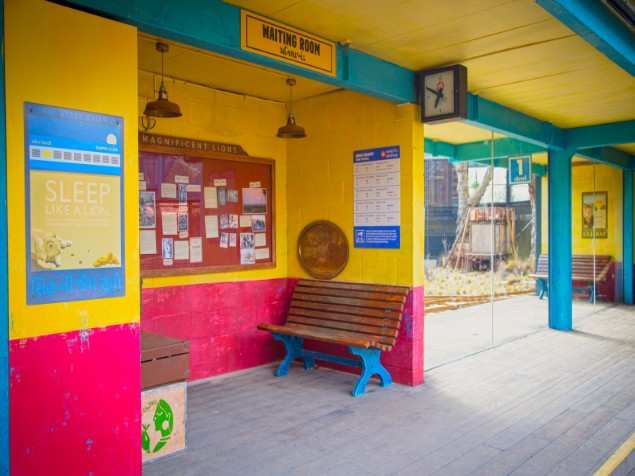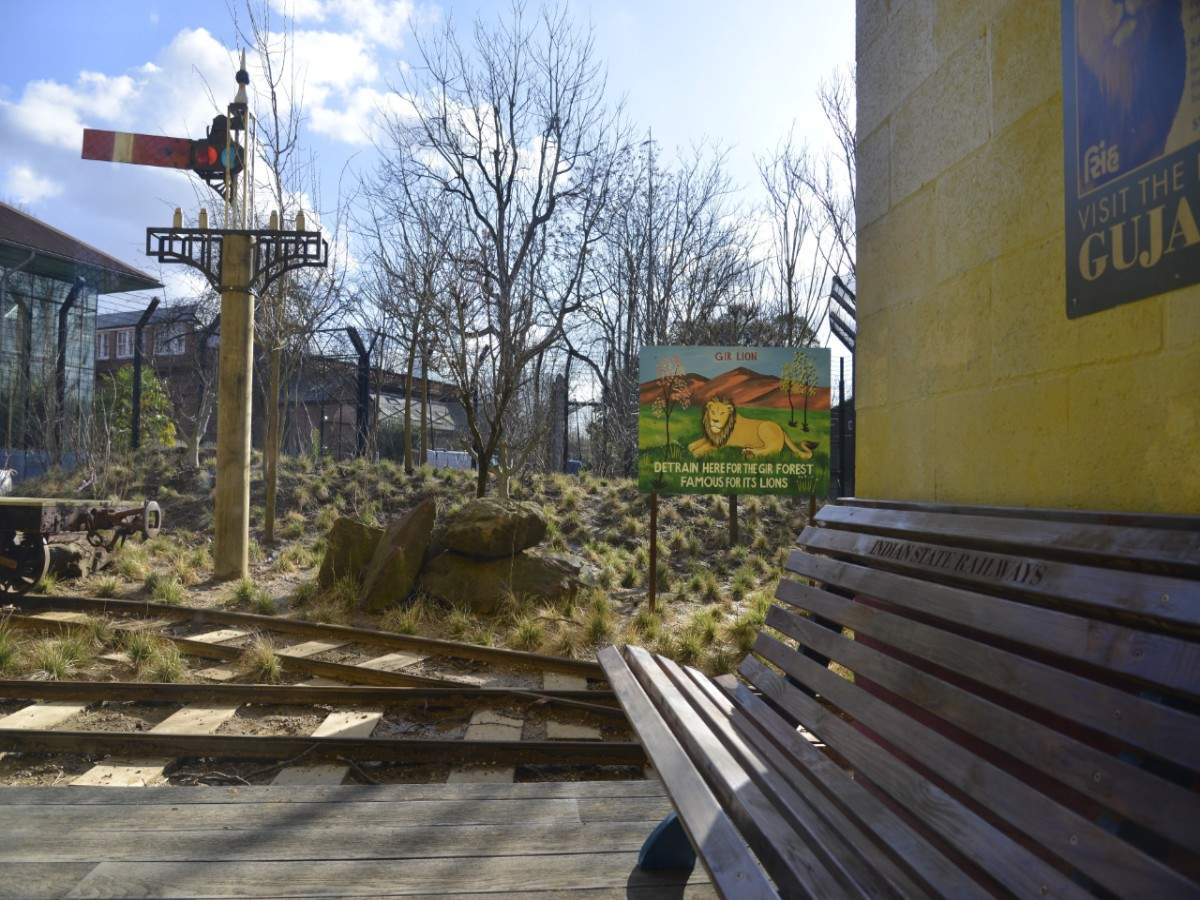
AHMEDABAD:
A large stone-walled entrance with the words ‘Land of the Lions’
inscribed on it, a train station, a crumbling temple clearing, a high
street and a guard hut, all these give you a glimpse of Gujarat’s Sasan
Gir at ZSL London Zoo, one of the world’s oldest zoos which houses five Asiatic lions.
“Land of the Lions is home to ZSL London Zoo’s pride of Asiatic lions — Bhanu, Heidi, Indi and Rubi — and tells the story of this critically endangered species, which is only found in one small area of India – the Gir Forest region,” says Emma Edwards, head of content and communications, Zoological Society of London (ZSL) that has developed the zoo.
The different areas of the 2,500 square metres exhibit are all inspired by their real counterparts in the Gir forest and nearby villages. For instance, the vibrant high street in the exhibit is modelled on the bustling village of Sasan Gir and the Maldhari community that lives so closely alongside the lions.

The Land of Lions was opened by Queen Elizabeth II in 2016. Since then, more than £3.6m have been garnered from scores of visitors.
Land of the Lions shows how the people of Gujarat are striving to conserve the rare cat and how ZSL is working with government institutions in India to protect this incredible species, including providing training on patrol monitoring and veterinary care.
The success story of Asiatic lions in Gir has become a model of conservation, with constant patrols against poachers. The protected area of Asiatic lions is spread over 1,452 sq km and includes five regions, including the Gir National Park, the Gir sanctuary, Matiyana and Paniya. About half of the population is outside the protected areas, closer to human settlements.

“Protected by law, the lions play an important role in the local community who deeply value the presence of the big cats. But due to their limited range, this population of approximately 600 are at threat from disease outbreak and conflict with humans in villages less comfortable with their presence,” according to Edwards.
ZSL London Zoo’s designers visited the lions’ wild home in Gujarat for inspiration and ideas and worked with members of the community there, and with London’s Gujarati community, to ensure the exhibit could be true to the India they know.

“Railway tracks cross the lion paddock, exactly as the train tracks cut through the Gir forest and the trains are often halted by lions ahead!”
“Every corner of our exhibit was inspired by the real Land of the Lions: The Gir Forest National Park and Wildlife Sanctuary. Even the sounds heard around Land of the Lions are true to life. During our visit to India we recorded soundscapes of street and forest life in Gujarat to ground Land of the Lions in reality,” she says.
Rickshaws, bicycles, sacks of spices, maps, rangers’ huts, and even a life-size truck – including lots of items sourced and shipped from India – help to create a vibrant and exciting space, both inside and out of the lions’ domain, highlighting the unique proximity in which Asiatic lions live alongside people in their native Indian habitat.
Providing cover to the pride
There are more than 442 shrubs, 47 trees, and 46 species of plants — all of which provide cover to the pride to practise their hunting skills — deep shade for sunny days and full sunlight for basking. There are multiple high vantage points, which the big cats like to lie on to survey their territory, spread over two different paddocks, alongside a range of indoor and outdoor dens for the pride.
https://timesofindia.indiatimes.com/india/lions-den-in-queens-land/articleshow/70042263.cms
“Land of the Lions is home to ZSL London Zoo’s pride of Asiatic lions — Bhanu, Heidi, Indi and Rubi — and tells the story of this critically endangered species, which is only found in one small area of India – the Gir Forest region,” says Emma Edwards, head of content and communications, Zoological Society of London (ZSL) that has developed the zoo.
The different areas of the 2,500 square metres exhibit are all inspired by their real counterparts in the Gir forest and nearby villages. For instance, the vibrant high street in the exhibit is modelled on the bustling village of Sasan Gir and the Maldhari community that lives so closely alongside the lions.

The Land of Lions was opened by Queen Elizabeth II in 2016. Since then, more than £3.6m have been garnered from scores of visitors.
Land of the Lions shows how the people of Gujarat are striving to conserve the rare cat and how ZSL is working with government institutions in India to protect this incredible species, including providing training on patrol monitoring and veterinary care.
The success story of Asiatic lions in Gir has become a model of conservation, with constant patrols against poachers. The protected area of Asiatic lions is spread over 1,452 sq km and includes five regions, including the Gir National Park, the Gir sanctuary, Matiyana and Paniya. About half of the population is outside the protected areas, closer to human settlements.

“Protected by law, the lions play an important role in the local community who deeply value the presence of the big cats. But due to their limited range, this population of approximately 600 are at threat from disease outbreak and conflict with humans in villages less comfortable with their presence,” according to Edwards.
ZSL London Zoo’s designers visited the lions’ wild home in Gujarat for inspiration and ideas and worked with members of the community there, and with London’s Gujarati community, to ensure the exhibit could be true to the India they know.

“Railway tracks cross the lion paddock, exactly as the train tracks cut through the Gir forest and the trains are often halted by lions ahead!”
“Every corner of our exhibit was inspired by the real Land of the Lions: The Gir Forest National Park and Wildlife Sanctuary. Even the sounds heard around Land of the Lions are true to life. During our visit to India we recorded soundscapes of street and forest life in Gujarat to ground Land of the Lions in reality,” she says.
Rickshaws, bicycles, sacks of spices, maps, rangers’ huts, and even a life-size truck – including lots of items sourced and shipped from India – help to create a vibrant and exciting space, both inside and out of the lions’ domain, highlighting the unique proximity in which Asiatic lions live alongside people in their native Indian habitat.
Providing cover to the pride
There are more than 442 shrubs, 47 trees, and 46 species of plants — all of which provide cover to the pride to practise their hunting skills — deep shade for sunny days and full sunlight for basking. There are multiple high vantage points, which the big cats like to lie on to survey their territory, spread over two different paddocks, alongside a range of indoor and outdoor dens for the pride.
https://timesofindia.indiatimes.com/india/lions-den-in-queens-land/articleshow/70042263.cms
No comments:
Post a Comment